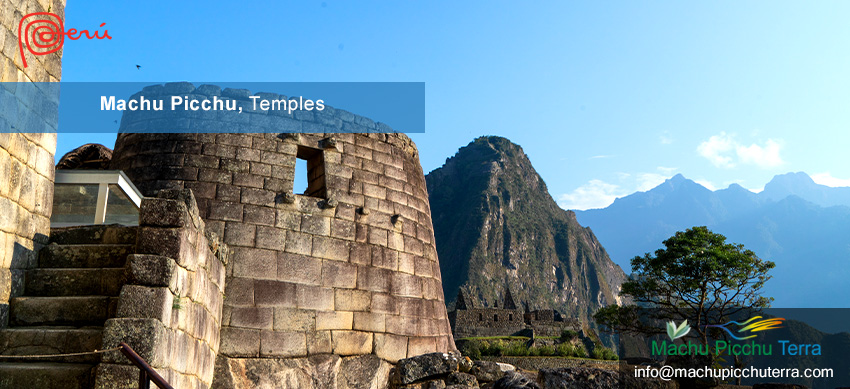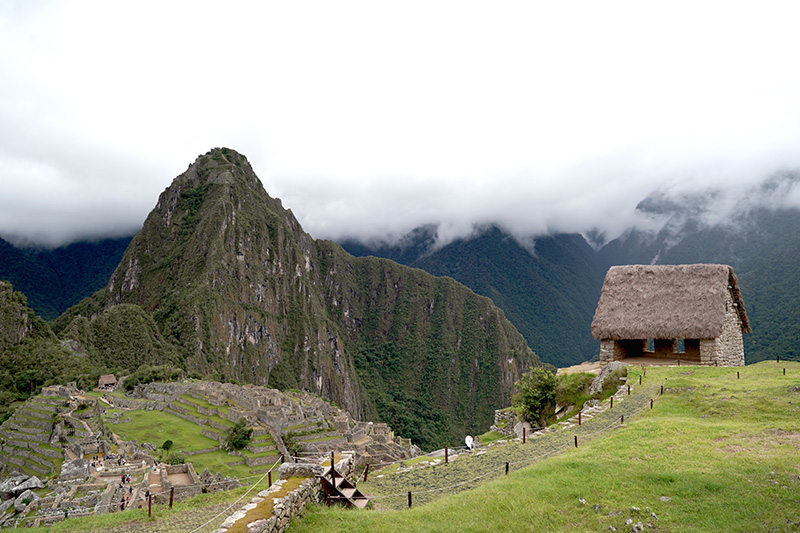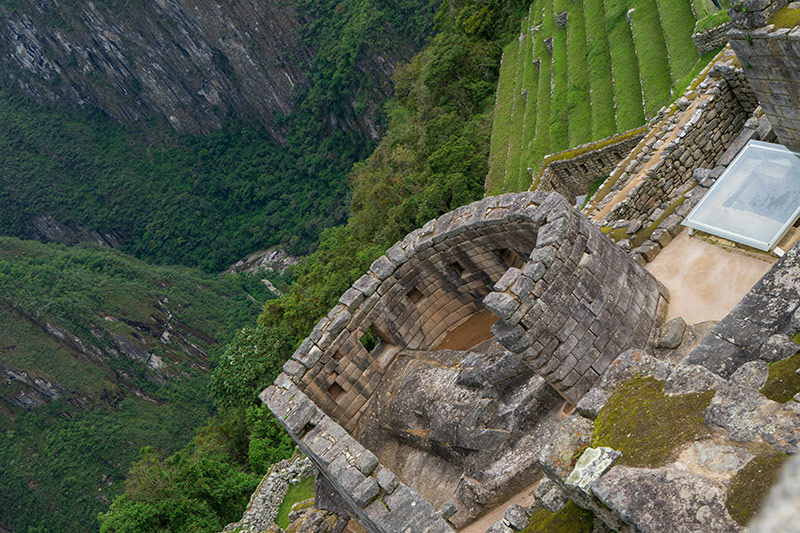
Machu Picchu is the main attraction that Peru has for visitors. It has become an ideal place for all kinds of tourism. Machu Picchu can be reached in different ways such as by bus, train, and walking. The hikes are the most requested for tourists who love nature, these tours take at least 4 days. The most spectacular trekking route is the Inca Trails which lasts 4 days, when you make this trek, you arrive at the main gate of Machu Picchu the Inti Punku. Inside this llaqta, you can find several areas, such as the terraces that were dedicated to agriculture, the housing area, and what interests us today, the area of the temples. In Machu Picchu, we will find several temples, let’s know some of them.
How are the main constructions of the Incas characterized?
The main constructions of the Incas are also called imperial-type constructions. This type of construction has the appearance of being joined by the weight of stones on stones. However, the union was made by invisible crimps, that is to say, the crimps channels were carved through which bronze or other metal was introduced in a liquid state so that when the stones were solidified they were fixed. This gives the appearance that the stones have nothing that unites them, with this technique they achieved a perfect union of large stones.
Another characteristic and perhaps the most important is that the finish of these stones was completely polished, that is to say, it is possible to find stones carved in the form of cushions. Something that also plays an important role, because perceptively generates harmony, especially when we see large stones. The best examples of this imperial finish can be found in the Coricancha temple, the Ushno of Vilcashuamán, and the ceremonial sector of Pisac, and Machu Picchu.

View of Machu Picchu from the Guardian’s House
The Sun Temple
The Temple of the Sun is built on a stone that forms a cavern. This temple has a semi-circular shape with finely carved granite stones. The circular wall is perfectly sectioned. Two windows can be seen between the walls. The windows become more important thanks to the carved stone inside the temple.
The carved stone of the Temple of the Sun has an imprecise form so it is not possible to specify exactly its function, it can be seen as an altar dedicated to the sun and the sacrifices in honor to the Sun God. It is also presumed that it served as a solar observatory precisely to determine the appropriate days to start planting.
In the lower area of the temple, right in the cavern formed by the presence of a solid and large stone, you can find what many researchers determine as a royal tomb by the finishes that were given to the area of the cavern and the enclosure surrounding it, where presumably could be found sheets of gold. Gold was the metal used to represent the Sun God or Inti, considered the maximum deity in the mythology of the Inca Empire.

View from the top of the Temple of the Sun
The Condor Temple

The Condor Temple – Machu Picchu
The main temple or Wayrara
This temple is located in the main area or center of the temples. Another name given to it is the Sacred Plaza. It has three large rectangular walls that serve as foundations for the rest of the stones that make up the wall. Wayrara would mean “place where it is very windy” or “where the wind is very strong”. This name plays a lot with the construction of only 3 walls.
In the part that looks to the south, in one of the walls, you can find the carving or the vestiges of the figure of a Chacana that is also known as Cruz del Sur. The vestiges present a stone in high relief that probably had some figure or decorations of wood, gold, or silver. It is estimated that it was a temple dedicated to long liturgies since it would be dedicated to the god in charge of creating the whole universe, Wiracocha.
Unfortunately, you can find that a sector of the walls has some displacement, this is due to the geological faults of the place and the constant rains. However, it is still an imposing temple that is still standing after 600 years of existence.

Part of the Main Temple in Machu Picchu
The temple of the 3 Windows
It is probably the most important temple of Machu Picchu, in all of its walls you can find large stones and finely carved. It has a span of twelve meters long by 5 meters wide. It is also built with 3 walls, all of which are in the perfect position to look at the Main or Sacred Plaza.
The wall of the center is the one that presents the 3 windows, they are great size and it is possible to observe them from the zone of the Hurin. All these constructions are in the Hanan zone which would represent an exclusive territory, hence the presence of all the temples. The sales have trapezoidal shapes. Inside the walls, you can also find 2 niches that enhance their ceremonial or religious importance.
For the Andean mythology, the 3 windows can represent different, that in some way are related to each other. One of them is that it refers to the legend of the Ayar Brothers that come out of three windows of the Tambutoq’o hill. Another representation of this triarchy would represent the Hanan Pacha (world of the gods), Kay Pacha (earthly site), and Uck’u Pacha (world of the dead).

Visa from inside the Temple of 3 windows
The Intihuatana
The Intihuatana is a carved rock that generates different shadows that coincide with the movement of the sun. It also helps to understand the season of the year according to the shadow it casts. This stone was used to make measurements and predictions to help the beginning of the planting season. All this enclosure is very close to the temple of the 3 Windows and the Main Square; thus configuring a series of imperial and religious constructions.
This stone is located on a small mountain which is reached by following a series of stairs. At the moment of arriving at the main door of this enclosure, the walls with finely carved stones can be found, which would exalt the ceremonial function and the importance of this sector.
This is probably one of the most important constructions of the entire site. Likewise, it is one of the main attractions of Machu Picchu. Some tourists or travelers define it as a stone charged with energy so they travel just to touch it. As mentioned above, the fact that it is located on a mountain that gives it the appearance of a pyramid also gives it an important role in the Andean cosmovision.
The Moon Temple is another of the most important buildings. This temple is located in Huayna Picchu, a two hour walk from Machu Picchu. Huayna Picchu has other constructions that will make you feel vertigo because they are very close to cliffs. The construction of this temple takes advantage of a cavern or natural cave to shape its space. Inside this construction we can also find the carved stones characteristic of these spaces.

Intihuatana (Where the Sun is moored)
By Inca Trail Machu Picchu - Last updated, 19-03-2024
Interested in the Inca Trail? Know more about Archaeological sites!
- Archaeological sites in Cusco – ideal prior to the Inca Trail
- Short Inca Trail – What archaeological sites are visited?
- Inca Bridges on the Inca Trail
- Huamanmarca or Wamanmarca archaeological site
- Qoriwayrachina archaeological site
- Runkurakay archaeological site
